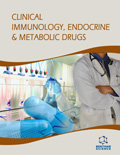Abstract
The multiple actions of Angiotensin II (Ang II), one of the most important humoral factors in hypertension, are mediated via binding to cell-surface receptors that then activate specific, complex intracellular signaling pathways. While elucidation of Ang II-mediated signaling has made considerable progress, the enumeration and complete understanding of the biochemical processes controlled by Ang II signaling in humans remain unfinished. The complex and pleiotropic cellular effects of Ang II are mediated via the activation of a myriad of signaling mechanisms [1, 2]. The signaling evoked by Ang II involves monomeric and heterotrimeric G proteins, phospholipase Cβ, multiple intracellular messengers e.g. inositol trisphosphate and Ca2+, and activation of protein kinase C. These then result in a multiplicity of Ang II dependent hemodynamic and endocrine effects as well as vascular smooth muscle contraction [3, 4]. These Ang II dependent actions are counterbalanced via the nitric oxide (NO) vasodilatory system thus forming a homeostatic system that links together hypertension, Ang II, oxidative stress, and NO systems to regulate both vascular function and structure [5, 6]. However, a large portion of the functions of these various elements and the overall functions of this system are extrapolated to human as they have been primarily investigated via ‘in vitro’ studies or through the use of animal models. In response to this, we have recruited and characterized a cohort of patients with Bartters/Gitelman Syndromes as they present a constellation of clinical findings that appear to be the mirror image of hypertension. Using our unique cohort, we have sought to explore, in a human system, multiple Ang II related mechanisms that have been proposed as underpinning the processes that result in hypertension. We review the results reported from our extensive studies and describe the insights these offer into the pathophysiology of vascular tone regulation via Ang II signaling leading to human hypertension.
Keywords: Angiotensin II signaling, Bartter's syndrome, Gitelman's syndrome, Hypertension, Rho kinase.
 24
24

